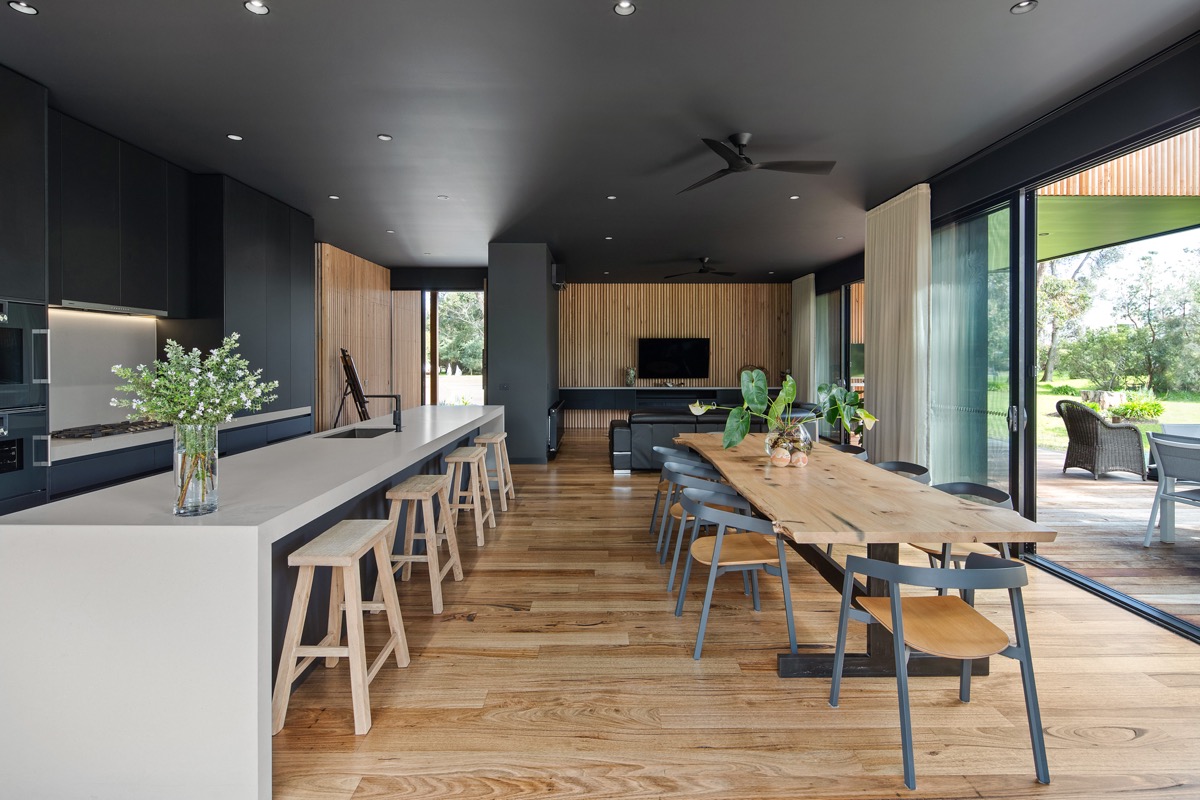A building designer can also work with you to create a house design, with some specialising in the design and construction of high performing, energy efficient homes. A building designer (or draftsperson) can also help turn your own ideas into a full set of working plans for construction, or help modify existing plans to suit your needs.
Some building designers are also builders so might be able to manage your project through to completion, or some builders might have a building designer that you can work with to hone your plans.
Use the Find a Designer tool from the Building Designers Association of Australia (BDAA) to connect to local building designer websites. Search the websites for previous projects that have high Home Energy Ratings (over 7 Stars is ideal) and that are designed to Bushfire Attack Levels, to see if they might be the right person/business for your project.
Sanctuary magazine also features several new sustainable homes by building designers.
Draftsperson, Building Designer or Architect — what is the difference?
A draftsperson
A professional with the required skills to draw buildings, who may have studied at TAFE or a private college, or developed experience on the job.
A building designer
Different states in Australia have different legalities around who can use this title, and whether they need to be formally licensed. The license building designers hold have will impact the scale and type of development they can work on – be it individual homes, apartment buildings, or public facilities such as childcare centres etc. Building designers may have studied at TAFE or university. Sometimes however, building designers are draftspeople who have gone through the licensing process.
An architect
For an architect to legally use that title in Australia, they must be ‘board registered’. This means they’ve
- completed a recognised university degree (usually 5 – 6 years of study)
- completed a required level of on-job experience (minimum 2 years)
- then sat a written exam and passed
- followed by an interview exam and passed
- and then annually (as part of re-registration) declare that they are fit to practice, and are continuing their professional development with a required number of hours of study and learning












